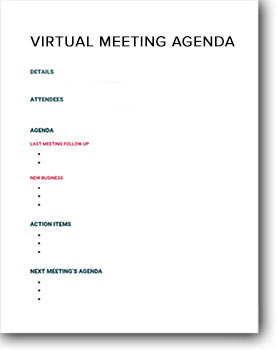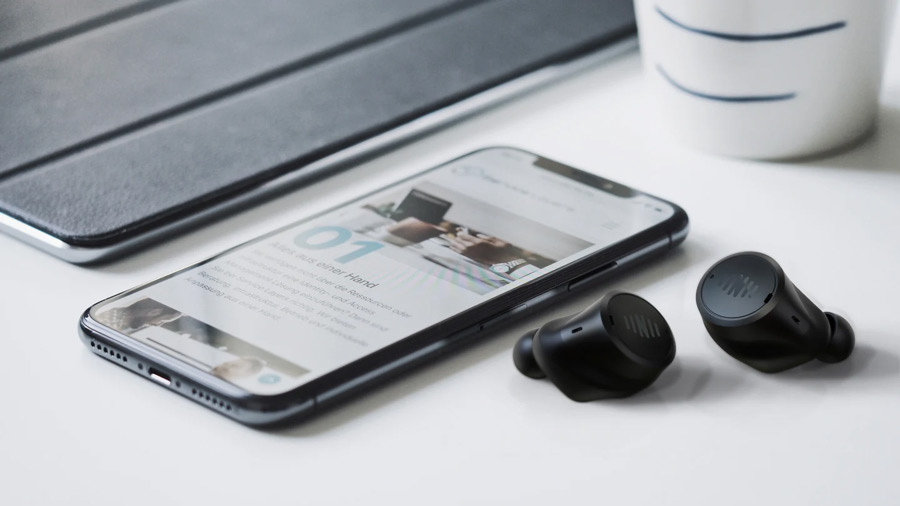
When the COVID-19 emerged as a pandemic in early 2020, millions across the globe suddenly shifted to working from home. Most had little or no time to prepare for the shift.
One of the biggest changes for people accustomed to daily in-person meetings was the new reliance on virtual meetings. Similar to standard office behavior, millions quickly learned that virtual meeting etiquette is crucial to ensure productivity when working at home.
Use the Video Option Whenever Possible
Though many won’t admit to it, they miss the daily human interactions of their old work routines. For those working at home, some now go days without speaking to or seeing another human being in person. Using both the sound and video features available in virtual meeting software programs helps replace some of that lost connection.
Being able to see each other in a meeting is reassuring, particularly the person hosting on the meeting. While there is a time and a place for casual dress, PennLive.com explains the benefits and upside of keeping things a bit more presentable:
Times are tough for those working from home, and wearing sweatpants all day, every day is one of the few silver linings. But if you’re in a position where you can put on something more professional-looking, it’s probably a good idea. You might also find it makes you feel a little more normal.
Virtual Meeting Etiquette 101: Beware of Your Background
Remember that meeting participants see not just you, but also everything around or behind you. Before attending a Zoom call or virtual meeting, walk through the work area and make sure the camera doesn’t show anything you wouldn’t bring to work.
A sloppy workspace might suggest a lazy approach to work or bad hygiene. Worse yet, items related to alcohol, drug use, or sex can cause conflict or even a loss of job in some cases.
In the video below, learn how your background during a video call can impact how others perceive you. Note that virtual backgrounds may be a useful solution for those without time to make their remote work set-up presentable.
IQbuds2 MAX for Enhanced Audio Connection
There’s nothing worse on a video call than dealing with someone in a noisy environment. Forcing other attendees to strain to hear over your screaming kids or barking dogs is a faux pas indeed.
Additionally, other video conference participants appreciate people who are actively listening and engaged in the meeting. Blocking out surrounding background noise is not just a courtesy to others, but also a way to enhance your focus. But what can be done when there is background noise that’s outside of your control?
Noise cancelling headphones with microphones are a common choice for many. However, the bulky look and the total isolation from the surrounding environment can be problematic.
For the reasons stated above, IQbuds2 MAX are the best wireless earbuds for work and proper virtual meeting etiquette. Users can turn off and on active noise cancellation with a tap of the ear. By contrast, they can also selectively blend background noise with their digital audio.
Additionally, the small form factor is not distracting visually, nor uncomfortable to wear like bulky headsets. The sound quality is excellent, and they are superior earbuds for work at home or in the office.
Make Sure Private Meetings Don’t Accidentally Become Public
Even though in-person work meetings aren’t always exciting, at least it’s understood that the conversation stays in the room. By contrast, unsecured Zoom calls or virtual meeting comments can end up on social media or elsewhere online. As such, the best way to avoid unwanted sharing is for the meeting organizer to send a private link to each attendee.
Setting a meeting password is another way of restricting access and ensuring privacy. Failure to secure meeting can result in unfortunate incidents by bad actors such as the “Zoom bombing” incidents described below in the clip by CBC/Radio Canada:
Virtual Meeting Etiquette: Distribute Agendas in Advance
 Some employees dislike attending meetings even when the meeting has a clear itinerary and the host keeps it productive. Scheduling mandatory meetings with no clear purpose or agenda will drive them nuts.
Some employees dislike attending meetings even when the meeting has a clear itinerary and the host keeps it productive. Scheduling mandatory meetings with no clear purpose or agenda will drive them nuts.
Meeting invitees should always receive a general idea of what to expect and discuss. Additionally, setting a firm end time also helps ensure that others organize their thoughts in advance and are respectful of time.
A basic agenda for virtual meetings should include an overview details to be covered, expected attendees, follow-ups from previous meetings, new business, and/or action items. Giving others a clear idea of meeting expectations helps keep things from going off the rails.
Determine if the Schedule Time is a Meeting or a Webinar
With few exceptions, meeting software requires the organizer to determine upfront if he or she would like to host a meeting or a webinar. If the organizer sets up a meeting, it should be a collaborative event and share these characteristics:
- Screen sharing functions
- Turn on audio and video
- See who else is attending the meeting
When setting up a webinar, only the host and designated panelists should have screen sharing access. The hosts should also set up virtual question and answer sessions, chat boxes, or online polls. Additionally, hosts of webinars should mute all other participants by default. The only participants who should be unmuted those called on to ask questions or comment.
Zoom meeting etiquette also dictates that organizers give speakers ample time before muting or cutting them off. This is because cutting someone’s comments short often leads to resentment. As a result, use the mute button sparingly when others are speaking. Appropriate examples of muting could include threatening or demeaning speech, or extreme time constraints.
Working at Home More Popular Than Ever
Even if the pandemic subsides, thousands of American employers plan to continue the work-at-home arrangement indefinitely. Remote work lowers business expenses and removes the hassle of commuting for employees. Working from home also helps employee productivity by removing many daily distractions.
Those workers who master proper etiquette for Zoom calls and virtual meetings will find more success. Remote work is likely here to stay, so the modern worker should try and embrace the concept.



